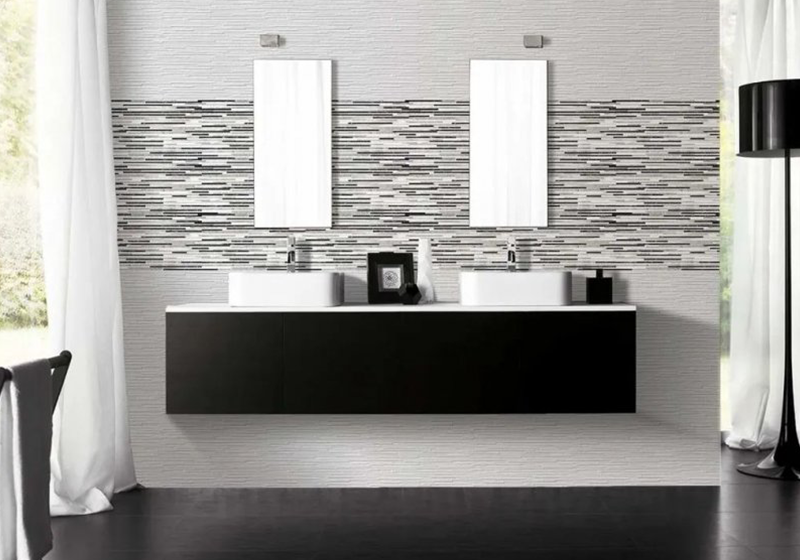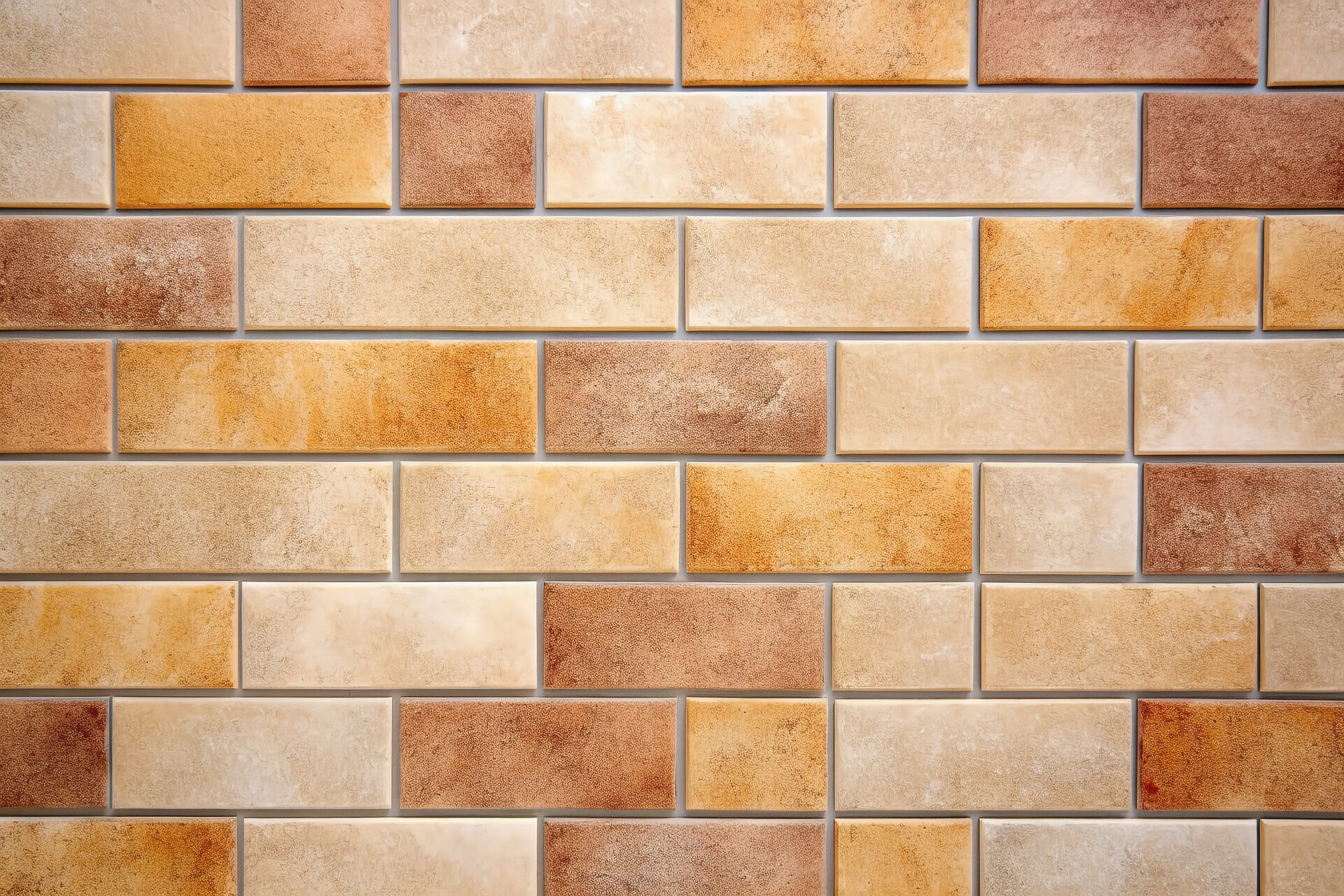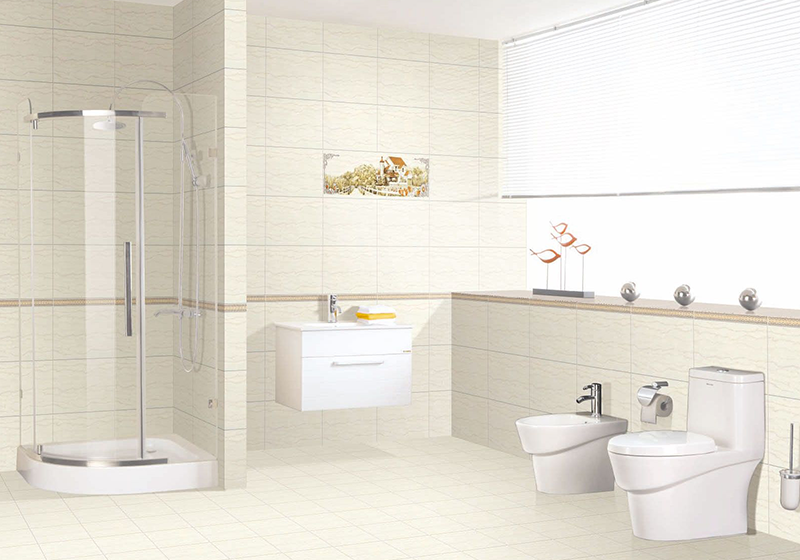Enhancing Safety and Style: Slip-Resistant Non-Slip Floor Tiles for Showers
Creating a safe yet stylish shower space involves careful consideration of flooring options. Slip-resistant non-slip floor tiles for showers have revolutionized bathroom design, offering both functionality and aesthetics. In this comprehensive guide, we delve into the world of commercial non-slip floor tiles, exploring their benefits, installation, and suitability for various spaces.
Understanding the Need for Slip-Resistant Non-Slip Floor Tiles for Showers
Slippery surfaces in shower spaces pose a significant risk, potentially leading to accidents and injuries. Understanding the need for non-slip tiles involves recognizing the inherent dangers associated with smooth or improperly textured surfaces in bathrooms:
1. Safety Concerns: Showers are prone to moisture accumulation, creating an environment where surfaces can become slick and hazardous. Smooth tiles, when wet, can be extremely slippery, increasing the likelihood of slips and falls, especially for individuals with limited mobility or balance issues.
2. Risk of Accidents: The bathroom, being a high-moisture area, is a common site for accidents. The combination of water, soap, shampoo, and other products can create an environment conducive to slips and falls, potentially causing injuries ranging from minor bruises to severe fractures.
3. Vulnerability of Users: Shower spaces are used by individuals of various ages and physical abilities. Elderly individuals or children, in particular, are more susceptible to accidents on slippery surfaces. Non-slip solutions are vital to ensure their safety and prevent mishaps.
4. Legal and Compliance Aspects: In commercial settings, such as hotels, spas, or restaurants, ensuring safety within bathroom areas is not just a preference but often a legal requirement. Compliance with safety standards mandates the use of non-slip flooring to mitigate risks.
5. Long-Term Health Impact: Falls in the bathroom can have long-term consequences, affecting not only physical health but also leading to a loss of confidence and independence in using shower spaces independently.
Exploring Diverse Options: Shower Floor Non-Slip Tiles
When exploring non-slip tile options designed for shower floors, a variety of choices are available, each offering unique features, durability, and design possibilities. Here's a detailed look at some common options:
1. Ceramic Tiles:
Features: Ceramic tiles are a popular choice for shower floors due to their affordability and versatility. They can be textured or treated to enhance slip resistance.
Durability: These tiles are durable, resistant to stains, water, and wear, making them suitable for long-term use in shower areas.
Design Possibilities: Available in various colors, sizes, and finishes, allowing for creative designs while maintaining safety.
2. Porcelain Tiles:
Features: Porcelain tiles are known for their durability and low water absorption rate, making them ideal for wet environments like showers.
Durability: Highly durable and scratch-resistant, porcelain tiles are long-lasting and require minimal maintenance.
Design Possibilities: Available in different textures and finishes, including matte and textured surfaces that enhance slip resistance without compromising style.
3. Natural Stone Tiles:
Features: Natural stone tiles like slate, travertine, or marble offer a luxurious aesthetic to shower floors while providing natural texture for better traction.
Durability: Each type of stone varies in durability, but when properly sealed and maintained, they can be suitable for shower floors.
Design Possibilities: Unique patterns and colors inherent to natural stone offer a high-end look to shower spaces.
4. Pebble Tiles:
Features: Made from smooth, rounded stones set in a mesh backing, pebble tiles create a textured surface that enhances grip and massages feet.
Durability: Despite their natural feel, pebble tiles are durable and can withstand water exposure in shower areas.
Design Possibilities: Provide a spa-like ambiance and come in various colors and sizes, offering a distinctive aesthetic to shower floors.
5. Mosaic Tiles:
Features: Mosaic tiles, often made from glass, ceramic, or natural stone, offer versatility in design and can be arranged to create patterns for better traction.
Durability: Sturdy and water-resistant, mosaic tiles are suitable for shower floors when installed correctly.
Design Possibilities: Endless design options due to their small size and variety of materials, allowing for intricate and visually appealing patterns.
Non-Slip Flooring Tiles for Bathroom in Commercial Settings
Non-slip tiles play a crucial role in commercial settings, offering safety, durability, and practicality, especially in high-traffic areas like restaurants. Here's a detailed examination of their relevance and advantages in such environments:
1. Safety Assurance: In restaurants, where spills are common, non-slip tiles significantly reduce the risk of accidents caused by slippery floors. These tiles provide traction even in wet conditions, minimizing the chances of slips and falls for both staff and customers.
2. Compliance with Safety Standards: Regulations often mandate safety measures in commercial spaces to ensure the well-being of patrons and employees. Non-slip tiles help establishments comply with safety standards, mitigating liability risks associated with accidents on slippery surfaces.
3. Durability and Longevity: High-traffic areas demand durable flooring solutions. Non-slip tiles are built to withstand heavy foot traffic, spills, and frequent cleaning without compromising their slip-resistant properties. This durability ensures a longer lifespan compared to traditional flooring materials.
4. Ease of Maintenance: In busy restaurant settings, maintenance should be efficient. Non-slip tiles are easy to clean and maintain, requiring minimal effort to keep them safe and visually appealing. Regular cleaning routines help preserve their slip-resistant qualities.
5. Aesthetic Appeal: Non-slip tiles come in various designs, colors, and textures, allowing restaurants to maintain a visually appealing ambiance without compromising safety. They can complement different decor styles, enhancing the overall dining experience for customers.
6. Versatility in Design: Beyond safety, non-slip tiles offer design versatility. Restaurants can use these non-slip restaurant floor tiles to delineate specific areas, create patterns, or incorporate branding elements into the flooring, adding to the ambiance and branding of the establishment.
7. Cost-Effectiveness: While initially, the cost might be slightly higher than conventional flooring options, the long-term benefits of non-slip tiles, such as reduced accidents and maintenance costs, make them a cost-effective investment for commercial spaces.
8. Brand Reputation: Prioritizing safety through the use of non-slip tiles contributes to a positive brand image. Customers appreciate establishments that prioritize their well-being, leading to increased trust and loyalty.
Choosing the Right Tile: Factors to Consider
1. Texture:
Safety Impact: Texture plays a pivotal role in providing traction. Opt for tiles with textured surfaces or raised patterns that enhance grip, especially in wet conditions.
Aesthetic Impact: Textured tiles can add depth and character to the space, offering visual interest while maintaining safety. Choose textures that complement the overall design scheme.
2. Material:
Safety Impact: Different materials have varying slip-resistant properties. Porcelain, ceramic, and natural stone are popular choices known for their durability and slip-resistant surfaces when appropriately textured or treated.
Aesthetic Impact: Material choice influences the visual appeal. Each material offers distinct textures, colors, and patterns, contributing to the overall ambiance of the space.
3. Size and Shape:
Safety Impact: Larger tiles with fewer grout lines can offer a smoother surface and reduce tripping hazards. However, smaller tiles can provide more traction due to increased grout lines.
Aesthetic Impact: Size and shape influence the visual perception of space. Larger tiles can create a seamless look, while smaller mosaic tiles allow for intricate designs and patterns.
4. Color:
Safety Impact: Lighter colors may reveal dirt and water stains more prominently but can create an illusion of a larger, brighter space. Darker colors may conceal dirt but might make the space appear smaller.
Aesthetic Impact: Color choice sets the tone for the room. Neutral tones provide a timeless and versatile look, while bolder colors can add personality and create focal points.
5. Coefficient of Friction (COF):
Safety Impact: COF measures the tile's slip resistance. Higher COF values indicate better traction. Ensure the chosen tiles meet safety standards and have a COF suitable for the intended area.
Aesthetic Impact: While COF is crucial for safety, it's also essential to find tiles with an appropriate COF without compromising the desired aesthetic appeal.
6. Maintenance Requirements:
Safety Impact: Regular maintenance is crucial to preserve slip-resistant properties. Some tiles might require specific cleaning routines or sealants to maintain their effectiveness.
Aesthetic Impact: Understanding the maintenance needs helps in choosing tiles that align with the desired upkeep level while maintaining their visual appeal.
Installation Techniques for Non-Slip Tiles
Installing non-slip tiles requires precision and adherence to specific techniques to ensure optimal safety and longevity. Here's an overview of best practices and considerations for their installation:
1. Substrate Preparation:
Clean and Level Surface: Ensure the substrate is clean, free of debris, and level to prevent unevenness in the tile installation.
Moisture Control: Use waterproofing materials or membranes to prevent moisture penetration, especially in shower areas, ensuring a stable base for the tiles.
2. Choosing the Right Adhesive:
Modified Thinset Mortar: Use a modified thinset mortar suitable for the tile material and the specific conditions of the installation area. For non-slip tiles, select an adhesive that enhances adhesion and maintains the tiles' slip-resistant properties.
3. Proper Tile Placement:
Even Spacing and Alignment: Maintain consistent spacing between tiles and ensure proper alignment to create a visually appealing and safe surface. Pay attention to grout lines, which also contribute to traction.
4. Grouting:
Non-Sanded Grout: Use non-sanded grout for small grout lines and textured surfaces to avoid scratching the tiles. This type of grout helps maintain the slip-resistant properties of the tiles.
Seal the Grout: Apply a sealant to the grout lines after the grout has cured to enhance water resistance and protect against stains and mold growth.
5. Slope for Drainage:
Proper Drainage: Ensure that the tiles in shower areas have a slight slope towards the drain to facilitate proper water drainage, preventing water pooling and enhancing safety.
6. Follow Manufacturer Guidelines:
Refer to Manufacturer Instructions: Always follow the manufacturer's recommendations for installation, including specific adhesives, sealants, and techniques suited for the chosen non-slip tiles.
7. Professional Installation:
Consider Hiring Professionals: For complex installations or large areas, hiring experienced tile installers can ensure proper techniques are employed, reducing the risk of errors that may compromise safety and longevity.
8. Regular Maintenance:
Scheduled Maintenance: Educate end-users on proper maintenance routines to preserve the tiles' slip-resistant properties. Regular cleaning and upkeep are essential to maintain safety features and prolong longevity.
9. Test and Quality Assurance:
Post-Installation Testing: Conduct slip resistance tests post-installation to ensure the tiles meet safety standards and perform as expected in wet conditions.
Maintenance and Longevity of Slip-Resistant Non-Slip Floor Tiles for Showers
1. Regular Cleaning Routine:
Sweep or Vacuum: Remove dirt, dust, and debris regularly to prevent abrasive particles from damaging the tile surface.
Mild Cleaning Solutions: Use mild, pH-neutral cleaners specifically formulated for tiles to avoid damaging the surface or compromising slip resistance.
Avoid Harsh Chemicals: Stay away from abrasive or acidic cleaners that can erode the texture or protective coating of the tiles.
2. Targeted Cleaning for Stains:
Prompt Spill Cleanup: Wipe up spills immediately to prevent stains, especially in commercial spaces prone to spills from food or beverages.
Gentle Cleaning Methods: For stubborn stains, use a soft-bristled brush or non-abrasive pad with the recommended cleaner to avoid damaging the surface.
3. Periodic Deep Cleaning:
Scheduled Deep Cleans: Perform periodic deep cleaning using specialized tile cleaners or mild detergents to remove accumulated grime and maintain slip resistance.
Grout Maintenance: Clean and reseal grout lines periodically to prevent discoloration, mold growth, and deterioration, which can affect the tiles' stability.
4. Preventive Maintenance:
Regular Sealing: Apply sealants periodically to maintain the integrity of the tiles and grout, enhancing water resistance and preventing stains.
Matting or Rugs: Place mats or rugs in high-traffic areas or entryways to reduce the amount of dirt and moisture tracked onto the tiles.
5. Avoiding Abrasive Tools:
Soft Cleaning Tools: Use soft microfiber cloths, mops, or brushes to avoid scratching the tile surface while effectively removing dirt and grime.
Avoid Rough Materials: Steer clear of abrasive cleaning tools or materials that can compromise the texture and slip-resistant properties of the tiles.
6. Regular Inspections:
Check for Damage: Periodically inspect tiles for cracks, chips, or signs of wear. Promptly repair or replace damaged tiles to maintain safety and prevent further damage.
7. Professional Maintenance:
Consult Professionals: For extensive cleaning, intricate tile patterns, or large commercial spaces, consider hiring professional cleaning services familiar with non-slip tile maintenance.
Case Studies: Success Stories with Slip-Resistant Non-Slip Floor Tiles for Showers
1. Hotel Chain's Bathroom Renovation:
Scenario: A renowned hotel chain underwent a bathroom renovation, aiming to prioritize safety without compromising luxury.
Solution: They opted for non-slip porcelain tiles specifically designed for wet areas, ensuring slip resistance while offering a sleek, modern look.
Outcome: The installation significantly reduced incidents of slips and falls, enhancing guest safety. The tiles' elegant design also elevated the bathrooms' aesthetic appeal, aligning with the hotel's upscale image.
2. Restaurant's Flooring Upgrade:
Scenario: A bustling restaurant with high foot traffic experienced frequent spills, posing safety concerns for staff and diners.
Solution: The restaurant switched to non-slip ceramic tiles in the dining and kitchen areas, prioritizing safety without compromising the restaurant's ambiance.
Outcome: The slip-resistant tiles significantly reduced accidents caused by spills, ensuring a safer environment for both employees and customers. The tiles' varied designs complemented the restaurant's décor, enhancing its overall appeal.
3. Senior Living Facility's Shower Renovation:
Scenario: A senior living facility sought to enhance safety in its shower areas to cater to residents' needs.
Solution: They installed textured non-slip tiles specifically designed for wet spaces, ensuring secure footing for elderly residents.
Outcome: The slip-resistant tiles significantly reduced the risk of falls among residents, promoting their independence and confidence in using the shower facilities.
4. Fitness Center's Changing Room Upgrade:
Scenario: A fitness center identified safety concerns in its changing rooms due to moisture accumulation and smooth flooring.
Solution: They opted for non-slip porcelain tiles with a textured finish, providing traction even in wet conditions.
Outcome: The installation of slip-resistant tiles reduced slip incidents, ensuring a safer environment for gym-goers. The tiles' durability also withstood high usage and frequent cleaning.
The Future of Non-Slip Flooring: Innovations and Trends
1. Larger Format Tiles:
24x48 White Matte Porcelain Tiles: These larger tiles offer a seamless look with fewer grout lines, providing a sleek and modern aesthetic. Their size creates an illusion of more significant space in showers, making them ideal for both residential and commercial settings.
2. Improved Texture Technology:
Advanced Surface Texturing: Innovations in texture technology focus on enhancing slip resistance without compromising aesthetics. These advancements aim to create textures that offer superior grip while maintaining a visually appealing finish.
3. Diverse Design Options:
Varied Finishes and Patterns: Manufacturers are introducing a wide range of finishes, from matte to textured, allowing for diverse design possibilities. Patterns, such as wood or stone textures, provide options for creating unique shower spaces.
4. Sustainable Materials:
Eco-Friendly Non-Slip Tiles: There's a growing focus on sustainable materials in tile production. Manufacturers are exploring eco-friendly options, such as recycled materials or sustainable manufacturing processes, to create non-slip tiles that are both safe and environmentally conscious.
5. Smart and Hygienic Features:
Antimicrobial Properties: Some innovations include tiles with built-in antimicrobial properties, inhibiting the growth of bacteria and mold, ensuring better hygiene in shower areas.
Potential Impact on Shower Designs:
Visual Continuity: The introduction of larger format tiles like 24x48 white matte porcelain tiles allows for a seamless look in showers, creating visual continuity and a sense of spaciousness.
Minimal Grout Lines: Fewer grout lines with larger tiles contribute to a cleaner and more streamlined appearance, reducing maintenance efforts and providing a modern aesthetic.
Enhanced Safety and Style: These innovations not only prioritize safety with improved slip-resistant surfaces but also offer versatility in design, allowing for the creation of sophisticated and inviting shower spaces.
Conclusion: Creating Safe and Stylish Spaces
Slip-resistant non-slip floor tiles for showers are pivotal in creating safe and visually appealing spaces, whether in showers at home or bustling commercial establishments. These tiles prioritize safety by significantly reducing the risk of slips and falls without compromising on design versatility. Their diverse textures, sizes, colors, and patterns offer seamless integration into various settings while meeting stringent safety standards. With durability, ease of maintenance, and innovations such as larger format tiles and sustainable materials, these tiles ensure long-term effectiveness in maintaining slip resistance. Ultimately, they strike a perfect balance, promoting safety, enhancing aesthetics, and fostering positive experiences for occupants and visitors alike in both residential and commercial environments.



